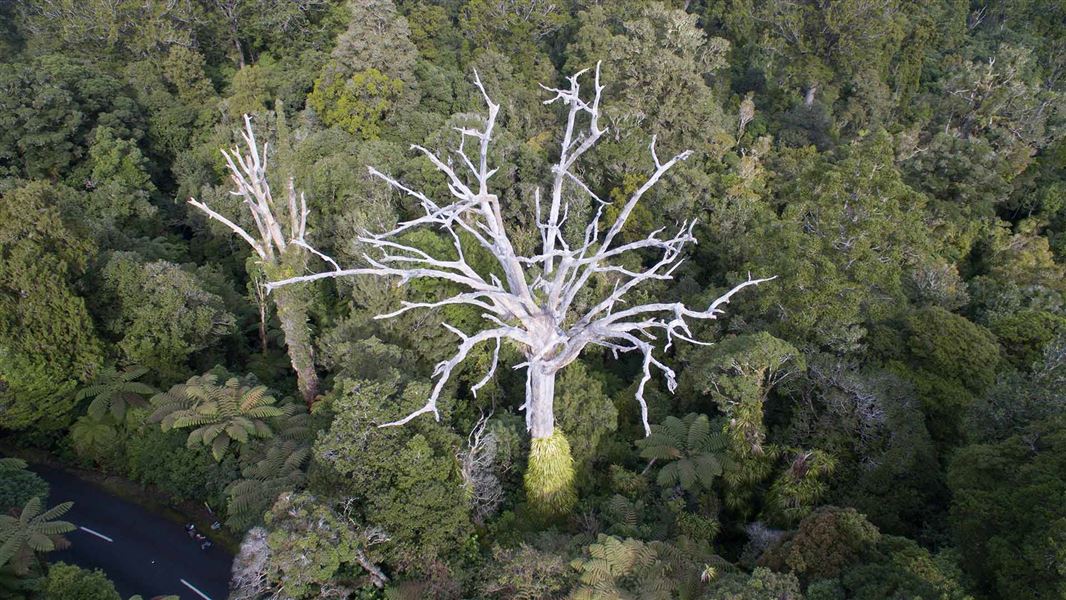PA - a threat to kauri
Phytophthora agathidicida (PA) is a soil-borne pathogen that infects kauri trees through their roots. PA restricts the ability of kauri to transport water and nutrients between their roots and their leaves, causing the condition known as kauri dieback disease, which eventually starves and kills the tree.
PA could have devastating effects on New Zealand’s kauri forests. It has been found in Northland, Great Barrier Island and the Coromandel Peninsula.
There is no known cure, but we can help reduce its spread by avoiding any movement of soil around the roots of trees. That means making sure we stick to the tracks and have spotlessly clean footwear and any gear that might touch the ground.
Kauri protection programme
Tiakina Kauri is the national programme for kauri protection. It is based in Biosecurity New Zealand, Ministry of Primary Industries (MPI).
DOC's role
DOC is a collaborating agency with Tiakina Kauri. We have responsibility for managing kauri protection on public conservation land, which includes many of New Zealand’s most significant kauri forests.
We have graded many tracks, installed cleaning stations and introduced behaviour change initiatives. Where appropriate, tracks may also be partially or fully closed to protect kauri.
We may close tracks to protect kauri trees - check alerts on our walking and tramping pages.
National Pest Management Plan 2022
The plan provides a consistent approach for managing the risk of the PA pathogen across Aotearoa. It brings together government, including DOC, Māori, councils and communities to lead and work collaboratively on kauri protection.
Read more about the plan and and Tiakina Kauri, the management agency
How you can protect kauri
PA is easily spread through soil movements, for example, when soil is carried on dirty footwear, animals, equipment and vehicles.
Follow these steps to contain the disease:
- Use the wash station if available
- Clean your gear
- Follow the instructions on the signage
- Stay on the tracks
More information on Tiakina Kauri website
Follow guidelines tailored to your recreation activity to help save kauri: Activity guidelines on Tiakina Kauri website
If you think you have seen symptoms of kauri dieback disease on public conservation land, contact the local DOC office.
Why it matters
Kauri forests once covered 1.2 million ha from the far north of Northland to Te Kauri, near Kawhia and were common when the first people arrived around 1,000 years ago.
Significant kauri, like Tane Mahuta and Te Matua Ngahere, are more than just trees. They are a presence that connect us with the past, and with those who have gazed up at them over hundreds of years.
Kauri create shelter and nourishment for other species, and are important to the indigenous forests of the upper North Island. A number of plants are found only, or mostly, in association with kauri. When kauri disappear, the kauri forest goes too.
Kauri are a taonga species for Māori and have significant value for our ecosystem, historic heritage, cultural values, tourism industry, and national identity.
